Updated December 18, 2024
Lurking under the cover of some of the world’s most beautiful cities are hordes of pickpockets whose mission is to separate travellers from their cameras, purses, phones, and wallets. Use these tips on protection from pickpockets to not let them and other thieves derail your trip.
Table of Contents
- Tips on protection from pickpockets
- 1. Develop a healthy ‘respect’ for pickpockets
- 2. Do your research
- 3. Prepare for pickpockets
- 4. Invest in anti-pickpocket gear
- 5. Modify clothing and accessories
- 6. Have digital backups
- 7. Carry a thin wallet
- 8. Scrutinize the in-room safe
- 9. Keep valuables out of sight
- 10. Always separate stuff
- 11. Avoid touching valuables
- 12. Stay alert
- 13. Beware of distractions
- 14. Limit alcohol intake
- 15. Keep your bag close
- 16. Use a phone with care
- 17. Carry a decoy wallet?
- Conclusion
Tips on protection from pickpockets
While some places have a reputation for being fertile terrain for pickpockets, it’s wise to work from the premise that pickpockets operate in all cities and all countries. As a result, build some tips on protection from pickpockets into packing strategies and travel habits, irrespective of destination.
1. Develop a healthy ‘respect’ for pickpockets
Pickpockets come in all sizes, ages, and packages. They could be young children, a man in a business suit, or a woman pushing a baby carriage. They might work alone or in a pack of three or four, each with a separate role. Most pickpockets are very good at what they do and need just a second or two to make off with your stuff. Assume that catching a pickpocket in the act is not something to be counted upon.
Most pickpocketing is opportunistic. A thief spots an opportunity such as a phone or wallet in a back pocket, a person who isn’t paying attention, a purse hanging on the back of a chair, or a tourist taking photographs at a popular attraction. Eliminate the opportunity, or make yourself less of a target, and chances are the thieves will move on to more vulnerable prey.
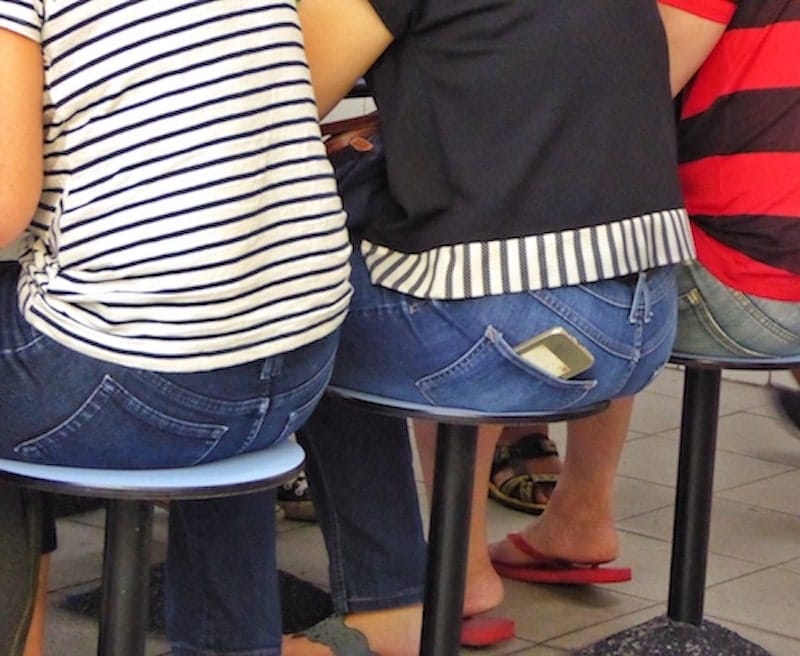
2. Do your research
While it’s wise to assume pickpockets operate all over the world, it’s useful to know if pickpocketing is prevalent in any of the stops on your itinerary. A useful starting point is the UK’s Foreign and Commonwealth Office. Or, use search criteria such as “pickpockets in __” (name of city or country) or “scams in __” and look for posts from travellers describing common tactics used by thieves.
3. Prepare for pickpockets
Preparing for protection from pickpockets begins at home. Here are some ideas.
- Plan to pack light. Travellers with a lot of luggage are easier targets. They have more belongings to steal and are slow-moving targets as they concentrate of managing several pieces of luggage.If you look like you need help from someone (and accept an offer of assistance), you may find yourself one or two bags lighter.
- Make a note of what insurance you have from a credit card or home policy, and if it covers theft. Work with a detailed packing list with information on the brands and models of your belongings in case you need to make a claim.
- Use RFID-blocking technology that’s utilized in the manufacture of products such as passport and credit card sleeves, security pouches, wallets, purses, bags, and clothing. RFID chips in passports, credit cards, and other forms of identification house all kinds of personal data. thief with a portable RFID card reader can steal personal information. It’s a simple matter of getting close enough, without personal contact, to scan the contents of a purse or pocket. With the newly acquired data, a thief could make fraudulent purchases or drain a bank account in short order.
- Leave expensive bling, valuable jewellery, and expensive outfits and accessories at home. Exuding opulence and appearing affluent makes you more of a target.
- Mobile payment technology reduces the need to handle financial cards or cash. Load the cards you plan to use into your mobile wallet (i.e., Apple Wallet, Google Wallet or Samsung Wallet) and become familiar with how to use it before your trip.
- Add bluetooth trackers such as AirTags to your bags and pair them with your phone. Activate the ‘Find My…’ function on your devices.
- Back up the data on your devices to the cloud and get into the habit of regular back ups during your trip. If you lose a device, you won’t lose your valuable data.
4. Invest in anti-pickpocket gear
Pickpockets aren’t looking for a challenge. They’re opportunistic, seeing a weakness in a target’s security and quickly taking action. Choose quality bags, clothing, and security pouches that are difficult to access so it’s not worth a thief’s time and effort.
- The post, Stop pickpockets with an assortment of anti-pickpocket gear has a long list of suggestions on commercial and handmade gear and adaptations.
- Security pouches and wallets can be useful – the type concealed under clothing.
- Look for clothing with deep or zippered internal pockets. For example, SCOTTeVEST is famous for its range of multi-pocket travel clothing, with most of the pockets hidden from view. My travel vest carries a lot of stuff that doesn’t count against my carry-on allowance. Some outings don’t require a purse.
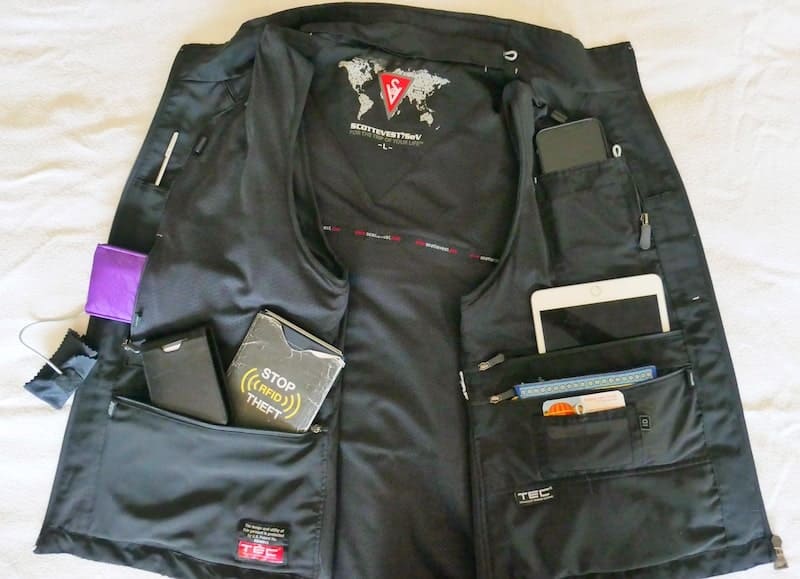
- If carrying a wallet in pants, choose a tight, deep and/or zippered front pocket – never a back pocket.
- Experienced pickpockets can easily access zippered pockets. Slow the thief down by securing the zipper with a small safety pin.
- Wear a shoulder bag diagonally across the body. Shorten the strap so the bag sits in front or tucked under an arm. Position it so the zipper pull or flap is facing inwards. Slash-proof bags with wire mesh lining add a stronger measure of security. So does a bag with a wide strap, which is more difficult to cut than a narrow one.
- If wearing a daypack, secure the zippers with clips, ties, S-biners, or mini cables. Keep in mind some pickpockets carry razor blades to slit open bags (and pockets) so wearing it in front in crowded areas will offer better protection. Pack it so items you can’t afford to lose are deep inside, preferably in a zippered compartment or tethered to internal bag hardware.
5. Modify clothing and accessories
Modify clothing and travel accessories to make it difficult for a thief to make off with belongings within a few seconds. For example, D-rings inside pockets, purses, and bags become attachment points to secure a phone, wallet, pouch, or packing cube with a small tethering strap or retractable coil.
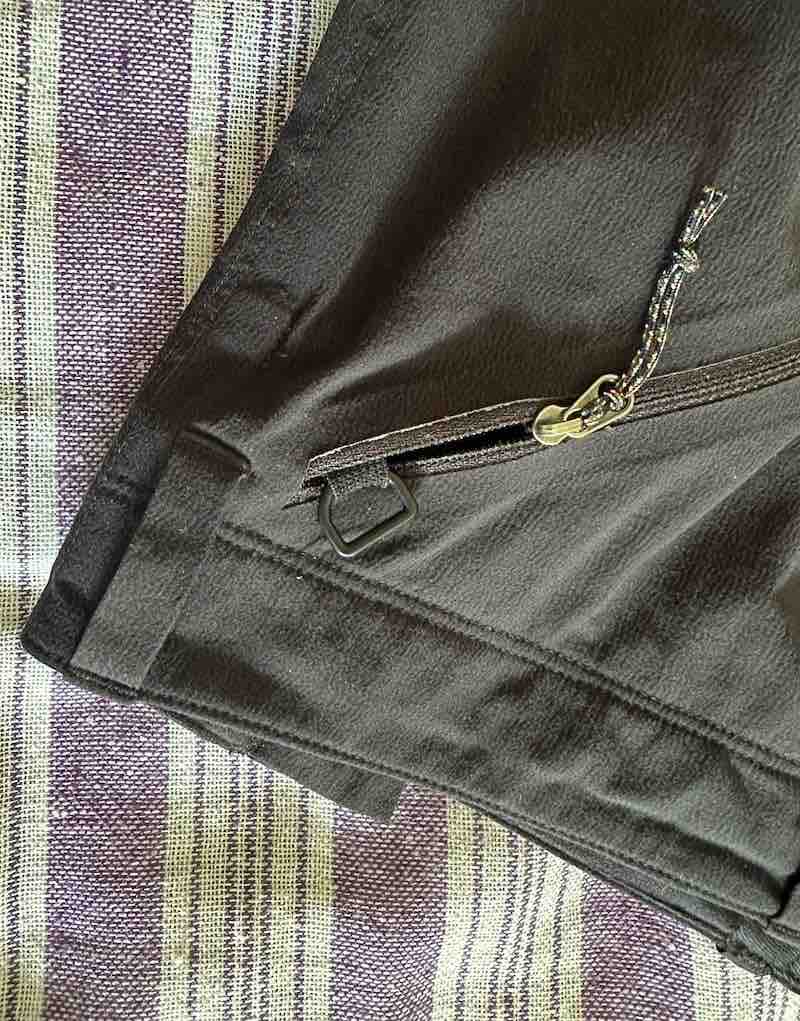
Removing the object of a pickpocket’s attention creates enough steps to seriously slow down a thief who is unlikely to succeed, and surely without your knowledge during the attempt.
A phone tether tab and a retractable coil attaches a phone to a D-ring in a pocket or purse. The phone remains attached while answering calls or looking up information.
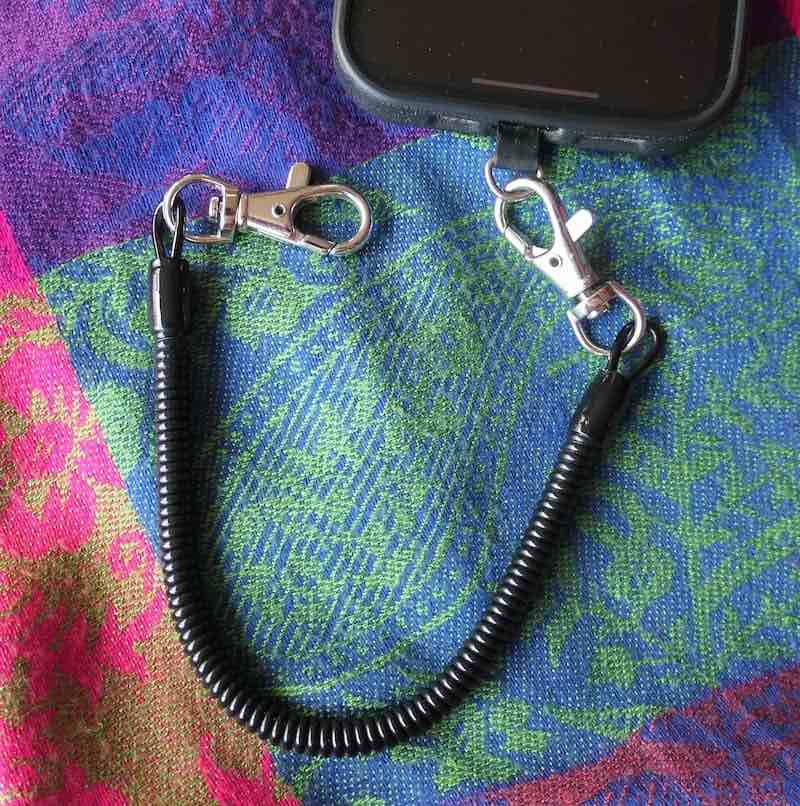
For more ideas, see Stop pickpockets with an assortment of anti-pickpocket gear.
6. Have digital backups
Don’t carry paper copies of credit and debit cards as the information can be useful to thieves. It’s one more item to keep secure.
The most important information in the case of a lost, stolen, or compromised card is the emergency contact details of the card issuer. These, and other pertinent information, can be stored in a password-protected digital wallet with solid encryption.
Make several laminated credit-sized emergency contact cards containing emergency contact information. Scatter them throughout your belongings. If you are pickpocketed, contact your card issuer without delay. See How to make a traveller’s emergency contact card in 5 easy steps for more information.
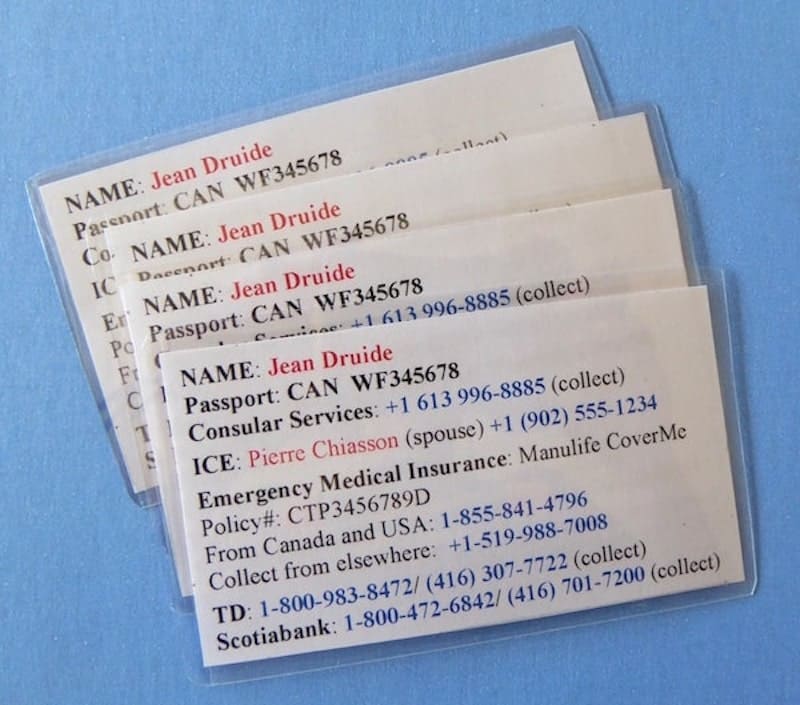
The PIN to use your financial cards should be memorized. If it must be recorded, add it to your password-protected digital password manager, separated from your financial cards.
Also, save a digital copy of the information page of your passport. Carrying laminated copies can be handy in a variety of situations. See 9 Tested reasons to carry laminated copies of your passport for details.
7. Carry a thin wallet
A bulging wallet is difficult to manage and keep safe. It’s also difficult to pinpoint exactly what it contained if it’s lost or stolen. Look for a minimalist wallet, preferably one with an attachment point to secure with a leash, retractable coil, tethering strap, or safety pin. My favourite comes from FurArt.
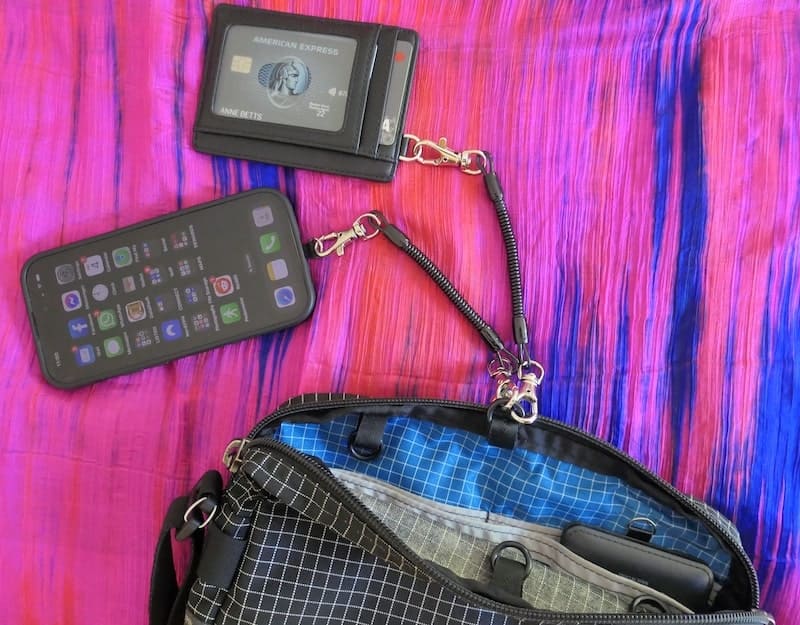
Evaluate what is actually needed when travelling. To help you plan what to put in your wallet and what needs to be carried elsewhere, see What’s in your travel wallet? 15 Tips for keeping your stuff safe
Make it a practice to never lose sight of your credit card. If a restaurant doesn’t have a portable credit card terminal to bring to the table, take it to the cashier. Immediately after use, return each card to its secure location.
8. Scrutinize the in-room safe
A safe, safety deposit box, locker, or somewhere to secure valuables can be better than carrying them around if they’re not needed. However, do so with caution.
TripAdvisor maintains a long list of travellers’ comments describing thefts from in-room safes of holiday accommodation. Before using any safe, find out how secure it is. Test how easily it could be moved. Ask what procedure is used in the event a passcode is forgotten, or a key is lost. Does the hotel have to bring in a locksmith? If hotel staff can access the safe, what’s the hotel’s protocol?
For example, some safes have a traceable audit trail capable of identifying who accessed the safe and at what time. Or perhaps two or three hotel staff members need to be present when a safe is opened, and contents recorded. If in doubt, look into using the hotel’s safety deposit box and ask similar questions about its level of security.
9. Keep valuables out of sight
When packing or moving things around, do so in private. If something needs to be retrieved from an under-clothing security pouch, look for a washroom or other private place. Treat it as a safety deposit box and never access it in public. Pack or rearrange belongings away from prying eyes. Refrain from counting money or rummaging through a wallet in the open, as it’s easy for someone to snatch it out of your hands and disappear into a crowd. In some parts of the world, the contents of a wallet or security pouch is more than what some workers make in a year. Flashing it around is both dangerous and insensitive.
10. Always separate stuff
Identify separate places for your debit card(s) and credit card(s). If one is lost, the other(s) will be available. If you plan to visit an ATM, place a debit card in your wallet and your credit card(s) in a security pouch, hidden inside clothing, or in an inside pocket of your purse.
Also, split up cash between two or three locations. For everyday purchases such as a snack, to top up a transit pass, or to support local street performers, carry a few smaller notes and coins in a readily accessible pocket or coin purse. The larger quantity can be stowed in a security pouch or a zippered inside pocket of outerwear.
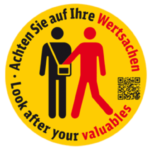 11. Avoid touching valuables
11. Avoid touching valuables
Pickpockets eye their marks for clues on where valuables are located. By clutching a bag tightly, patting a pocket, or fiddling with what’s inside, you might be unwittingly revealing the location of your valuables. Official and ‘not-so-official’ (as in fake) signs warning people about pickpockets can prompt travellers to check if their valuables are still intact. That’s just the sign a thief needs to hone in.
12. Stay alert
Remain aware of your surroundings, especially in tourist areas and crowded spaces. Other vulnerable spots are around ATMs, outdoor markets, transportation hubs, and public transportation routes from the airport to the city centre.
- After a long flight when you’re tired and disoriented, try to appear alert and decisive about where you’re going. If you’re in Barcelona, Rome, or Paris, chances are there are pickpockets assessing you as a target.
- Use ATMs in bank lobbies during banking hours, preferably when accompanied by another person who stands guard. Always shield the keypad when entering a PIN and if the machine swallows your card, you’ll be able to report it immediately. Skip the Euronet ATMs with their unfavourable currency conversion rates. Besides, only tourists use them and pickpockets know this.
- When out and about, travel headphone-free so as to concentrate on the surrounding sounds.
- Avoid talking or texting or consulting a map while walking. Stop, sit down, or back up against a wall away from passersby.
- When entering a building, bus or train, keep your bag in front and move away from the doors as quickly as possible. In those few moments before the doors shut, it’s a prime time for thieves to disappear out on to the sidewalk or subway platform with your valuables.
- At popular tourist attractions, while the fabulous view or famous fountain may be stunning, be aware of others in the crowd and what they’re doing. If anyone approaches you unexpectedly, you’ll be better prepared.
13. Beware of distractions
Distractions might include people bumping into you, asking if the money or jewellery on the ground is yours, asking for directions, engaging you in conversation, spilling something on your clothing and trying to wipe it off, falling down in front of you, or some other manoeuvre to grab your attention. While focussed on the distraction, that same person or an accomplice is moving in on your valuables with lightning-fast speed. If you suspect you’re a target, create a diversion of your own by jumping out of the way, suddenly changing direction, or doing something unexpected.
14. Limit alcohol intake
As alcohol can impair a person’s judgement, plan ‘happy hour’ back at your holiday accommodation or in safe surroundings. If you must go out at night to party, do so with another person and take just enough cash and minimal identification. Leave the rest of your valuables behind in a secure spot.
15. Keep your bag close
- When exploring a destination with a backpack, pack anything you can’t afford to lose in the main compartment as close to your back as possible. Pickpockets are more likely to focus on vulnerable exterior pockets. If your bag has internal attachment points, pack valuable items in pouches tethered to internal bag hardware.
- Get into the habit of wearing your bag while doing other things – taking photographs, visiting the washroom, heading for the buffet table, trying on shoes, or stopping for a snack.
- In a washroom cubicle, don’t hang it on the door or place it on the floor where someone can reach in and grab it. Look for a shelf or hook within sight and easy reach, wear it on your back, or place it in your lap.
- When sitting in airports or restaurants, wrap the strap around an arm or leg or the leg of a chair or table and keep it in your lap.
- On crowded public transportation, keep it in front – in your lap or worn across your body.
- Don’t place your purse or personal bag in the overhead cubicle on planes and buses. Keep your hand over the zipper or access flap.
- When dozing off during a flight, loop the strap(s) around your body or legs and cover the bag with a pashmina or jacket.
- To avoid a drive-by bag grab, choose the sidewalk facing oncoming traffic. Walk some distance from the curb with your purse away from the street traffic.
- In the case of larger bags or suitcases, place them in front of you rather than to the side where they could more easily disappear. If the bag has backpack straps, slip your foot through one of the straps.
- Watch your bags being loaded into the taxi or shuttle bus, and keep an eye on the unloading procedure at each stop.
- For a long layover or train travel, pack a lightweight cable or retractable cable lock and lock to attach bags to your body, belt, belt loop, chair, or luggage rack.

16. Use a phone with care
While many apps are useful travel aids, accessing them in public may make a person more vulnerable to theft. Where there are viable alternatives, use them.
- A flashlight app is handy, but to light your way in public places, pack a small flashlight.
- When you’re on a crowded platform, consult one of the platform maps instead of the one on your phone.
- For text and email management, do so in a coffee shop or restaurant as opposed to out on the street.
- If you need to review directions on your phone or check a guidebook, stop walking and back up against a building or wall away from passers-by.
17. Carry a decoy wallet?
Some travellers recommend carrying a decoy wallet. While mugging is less common, a decoy or ‘dummy’ wallet could be tossed to a mugger or thrown on the ground before (hopefully) making your escape.
Suggested contents are fake photos of family members, one or two receipts, a couple of expired credit cards, and a small amount of cash in the local currency. Avoid including any identifying information such as an expired ID.
Conclusion
Don’t let pickpockets ruin a vacation, or be the reason to change travel plans. Adopting strategies designed to decrease our vulnerability to pickpockets can go a long way to ensuring a positive travel experience.
If you found this post helpful, please share it by selecting one or more social media buttons. What’s missing? What other strategies do you use for protection against pickpockets? Please add your thoughts in the comments. Thank you.
Care to pin it for later?
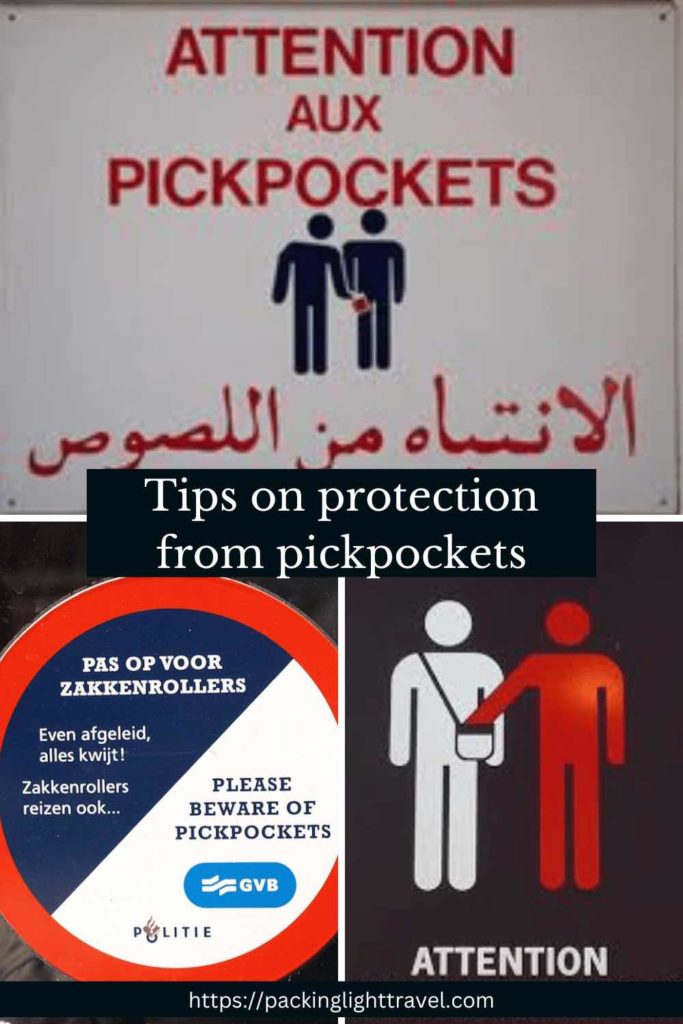
The Amazon links on this page are affiliate links. If you use them to buy something, you don’t pay more, but Packing Light Travel earns a small commission, which helps pay the costs of maintaining the site. Thank you for your support.

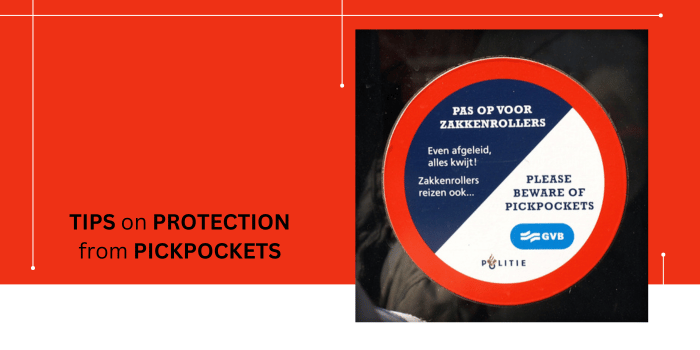
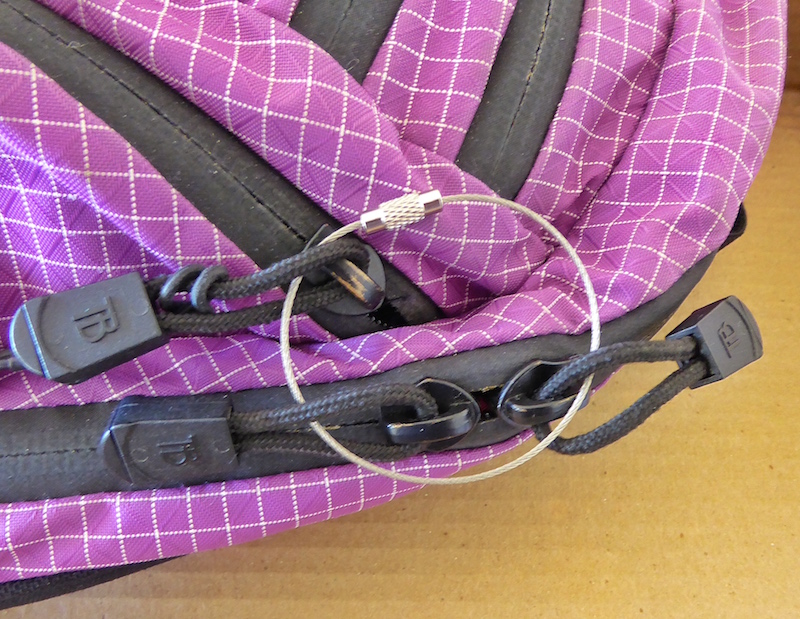




There was just an article that many hotels never reset the default over-ride password on their in-room safes. Since the default is generally 000000, lock the safe, enter that first and see if it opens. If it does, don’t use it and speak to the manager about changing it.
Thank you, Anna for adding such a valuable tip. I’ll be sure to try it out if I use an in-room safe.
Anne Betts recently posted…Animal welfare and tourism
I think every hotel authority should set a modern security system that can save the traveller from any hassle. Because spammers are always trying to stealing valuable things from hotels.
i agree with you.. last time i lost my wallet..lucky i have 2
thanks for sharing this great tips and idea!!